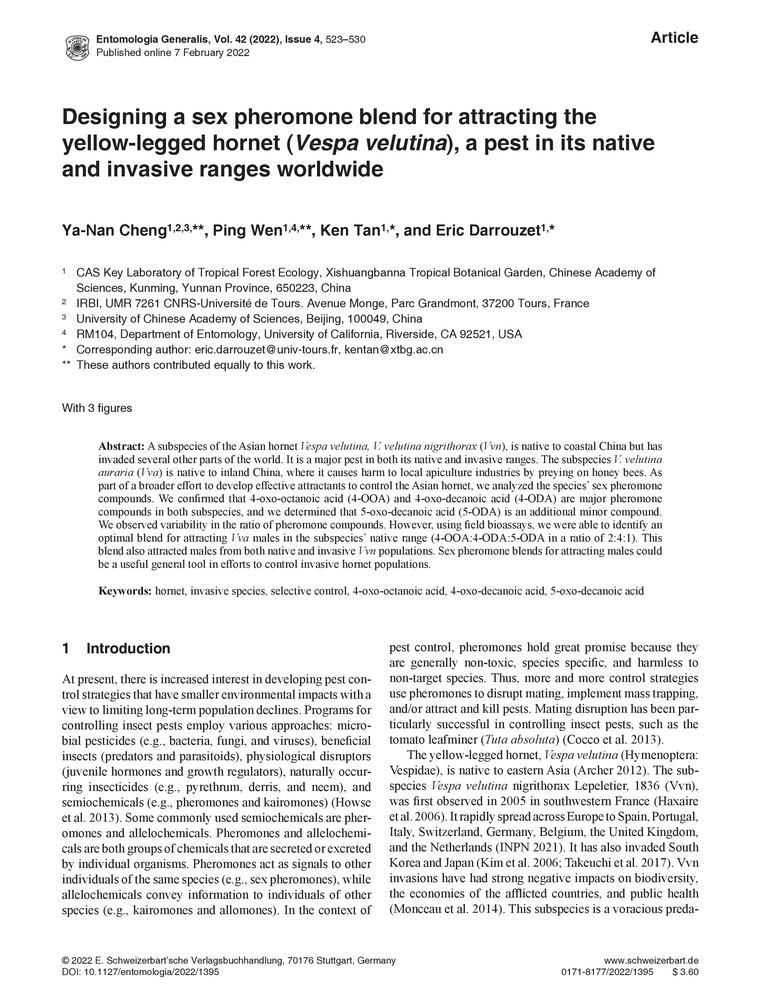Original paper
Designing a sex pheromone blend for attracting the yellow-legged hornet (Vespa velutina), a pest in its native and invasive ranges worldwide
Cheng, Ya-Nan; Wen, Ping; Tan, Ken; Darrouzet, Eric

Entomologia Generalis Volume 42 Number 4 (2022), p. 523 - 530
published: Jul 11, 2022
published online: Feb 7, 2022
manuscript accepted: Nov 23, 2021
manuscript revision received: Oct 29, 2021
manuscript revision requested: Sep 30, 2021
manuscript received: Jul 5, 2021
DOI: 10.1127/entomologia/2022/1395
ArtNo. ESP146004204003, Price: 29.00 €
Abstract
A subspecies of the Asian hornet Vespa velutina, V. velutina nigrithorax (Vvn), is native to coastal China but has invaded several other parts of the world. It is a major pest in both its native and invasive ranges. The subspecies V. velutina auraria (Vva) is native to inland China, where it causes harm to local apiculture industries by preying on honey bees. As part of a broader effort to develop effective attractants to control the Asian hornet, we analyzed the species’ sex pheromone compounds. We confirmed that 4-oxo-octanoic acid (4-OOA) and 4-oxo-decanoic acid (4-ODA) are major pheromone compounds in both subspecies, and we determined that 5-oxo-decanoic acid (5-ODA) is an additional minor compound. We observed variability in the ratio of pheromone compounds. However, using field bioassays, we were able to identify an optimal blend for attracting Vva males in the subspecies’ native range (4-OOA:4-ODA:5-ODA in a ratio of 2:4:1). This blend also attracted males from both native and invasive Vvn populations. Sex pheromone blends for attracting males could be a useful general tool in efforts to control invasive hornet populations.
Keywords
hornet • invasive species • selective control • 4-oxo-octanoic acid • 4-oxo-decanoic acid • 5-oxo-decanoic acid